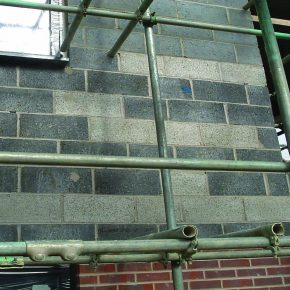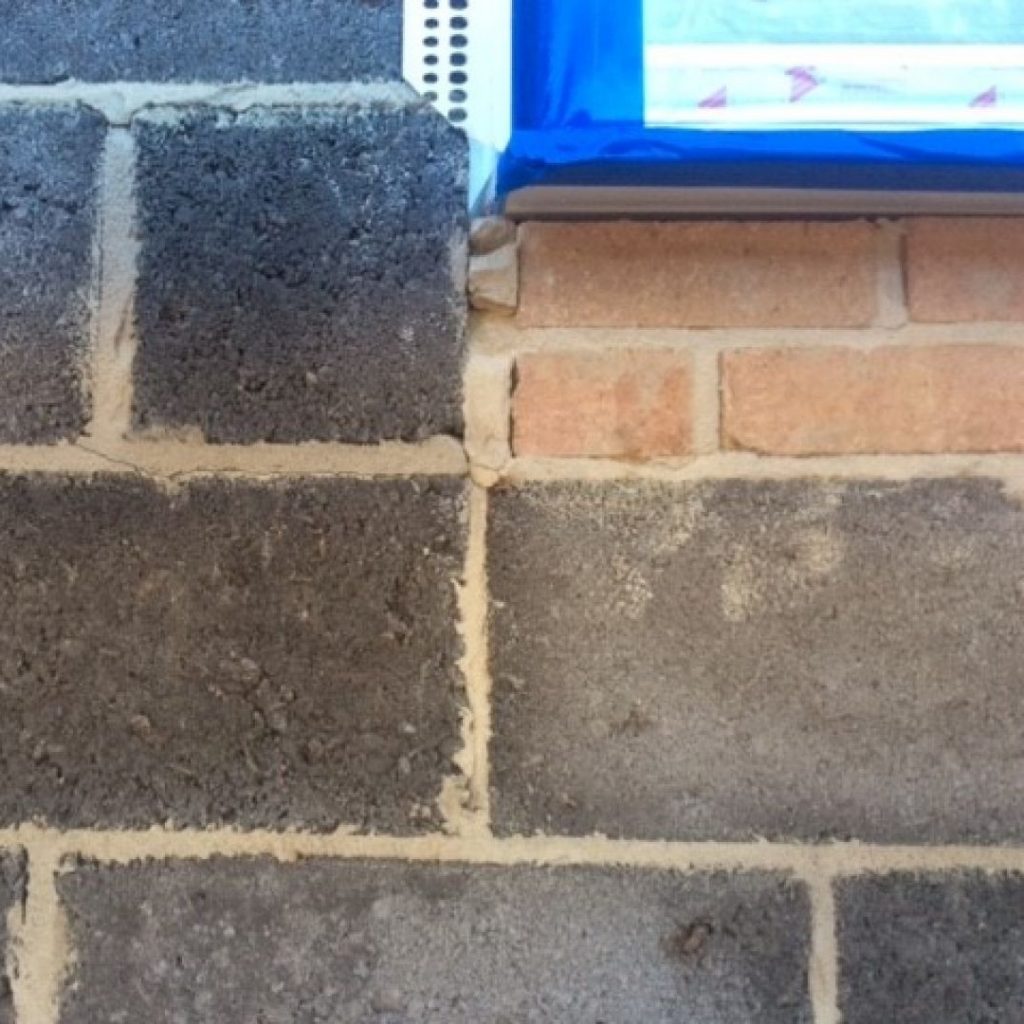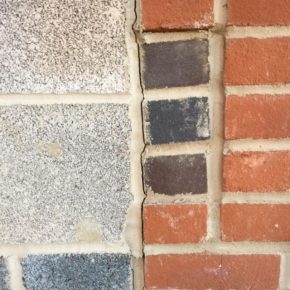
How to render onto a mix of substrate types with Saint-Gobain Weber
There are numerous unknown irregularities when rendering onto a mix of substrate types that prevent an informed judgement being made on how to carry out the work; Saint-Gobain Weber’s advice on the best action to take is below.
This issue is usually regarding the different expansion and contraction rates of various types of brick and blockwork, which causes stress and potentially even crack the render over time.
Before starting the job, it is vital to undertake a suction assessment to determine the level of absorbency within the blockwork.
If the absorbency is high, it will need to be lowered before proceeding any further. In normal circumstances, careful controlled dampening with water may suffice – more extreme cases will require an application of weberend aid.
weberend aid is designed to equalise suction and should be used when rendering onto mixed backgrounds.
Note that although weberend aid will create a suitable key once stippled and an even suction rate once dry enough, Saint-Gobain Weber cannot guarantee against cracking from the substrate due to differential movement from the different types of substrates that lie beneath the surface.
Therefore, it’s a good idea to incorporate a control joint at the point where the two materials meet. Render profile beads with a preformed seal or elastomeric coating can be used for this.

Good adhesion is the key to successfully applying render – this is dependent on how good the porosity of the substrate is.
If the suction is too high the render will not hydrate sufficiently and if it is too low, there can be issues forming a good bond.
So, all substrates should be clean, dry, sound, and free from anything that may interfere with the adhesion, such as oil, grease, and soluble salts.
Rendering onto a mix of substrates is not something Weber recommends and unfortunately it will not guarantee against cracking, but if none of the other options work then use weberend aid to help form a bond between substrate and render.

Visit the Saint-Gobain Weber website to access application tutorials and a consumption calculator to work out how much weberend aid is needed for your project.
Saint-Gobain Weber
Dickens House, Enterprise Way
Maulden Road
Flitwick
Bedford
MK45 5BY
UK
Visit Saint-Gobain Weber's website
Visit Supplier's page
Latest news

17th April 2025
Nuaire shares expertise at Specifi Mechanical Services events in 2025
Indoor air quality and ventilation manufacturing specialist Nuaire is pleased to be exhibiting at the Specifi Mechanical Services events once again in 2025.
Posted in Air Conditioning, Articles, Building Industry Events, Building Industry News, Building Products & Structures, Building Services, Exhibitions and Conferences, Facility Management & Building Services, Heating, Ventilation and Air Conditioning - HVAC, Restoration & Refurbishment, Retrofit & Renovation
15th April 2025
West Fraser: CaberDek earns top marks from Home Counties carpentry specialist
A specialist carpentry sub-contractor covering housing sites across a large swathe of the Home Counties has come to value CaberDek from the West Fraser range for a variety of reasons: not least because the high quality panel product doesn’t destroy his operatives’ electric saws!
Posted in Articles, Building Industry News, Building Products & Structures, Building Systems, Case Studies, Restoration & Refurbishment, Retrofit & Renovation, Roofs, Timber Buildings and Timber Products, Wooden products
15th April 2025
GEZE: The Role of Access Control Systems in Enhancing Building Safety
Jane Elvins, Specification and Business Development Manager at GEZE UK, delves into the role of access control systems in enhancing building safety…
Posted in Access Control & Door Entry Systems, Architectural Ironmongery, Articles, Building Industry News, Building Products & Structures, Building Services, Doors, Facility Management & Building Services, Health & Safety, Restoration & Refurbishment, Retrofit & Renovation, Security and Fire Protection
11th April 2025
Don’t Do a Dave! It’s Time to Lock FIT Show 2025 in Your Calendar!
It’s that time again – FIT Show is back! You could be forgiven for thinking there won’t be much new to see when FIT Show returns to the NEC from 29 April – 1 May. Wrong!
Posted in Articles, Building Industry Events, Building Industry News, Building Products & Structures, Building Services, Continuing Professional Development (CPD's), Exhibitions and Conferences, Information Technology, Innovations & New Products, Restoration & Refurbishment, Retrofit & Renovation, Seminars, Training
 Sign up:
Sign up: